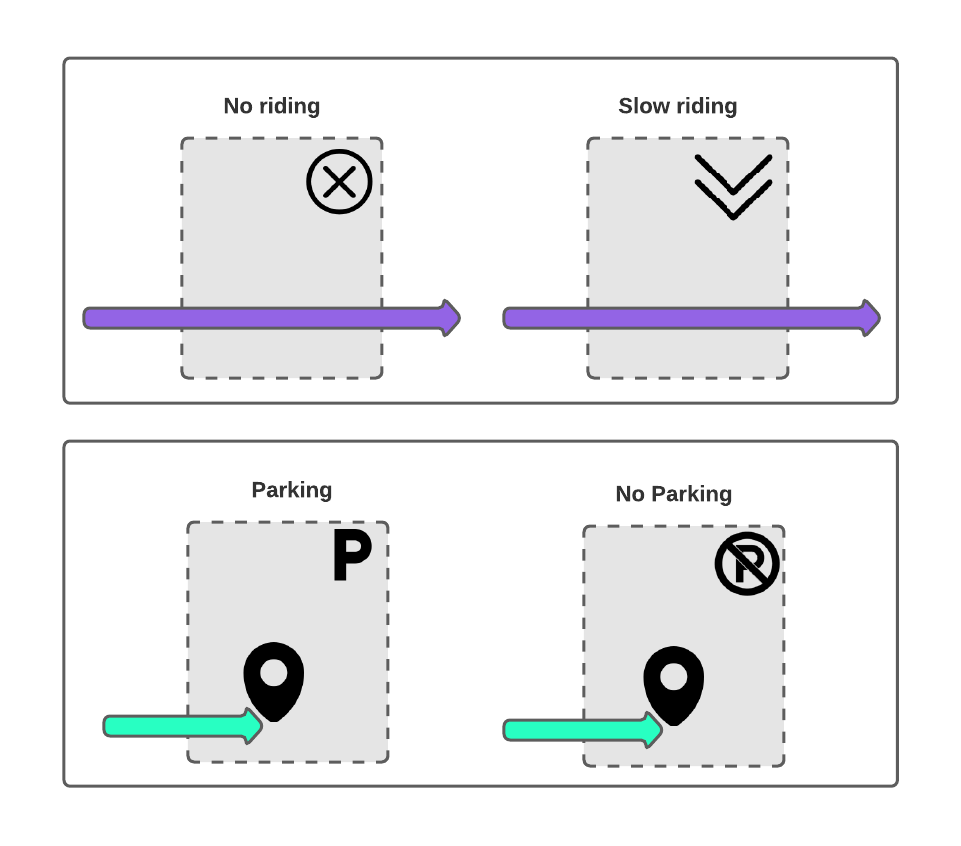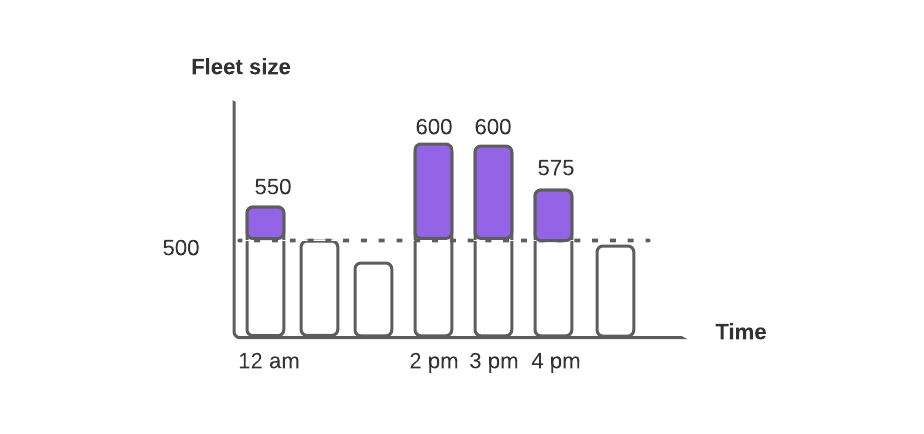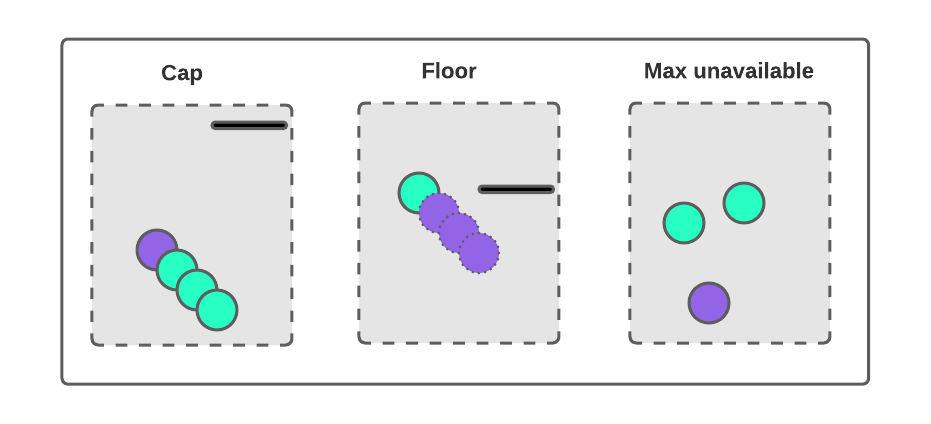Understanding compliance
Fleet base VS event base infractions
In this article we will explain our philosophy on "compliance" and why we think that the way we calculate it could help operators and cities better work together and improve the service to end users, while ensuring security and accessibility.
Compliance definition
Let's first define compliance :
The capacity for an operator to comply with a given set of digital regulations.
We have a list of possible regulations that helps the city express physical rules on the public right of way. These rules are expressed digitally using our tools.
Event based
Event based rules are based on individual device behaviour and status. Any time the event occurs, an incident is triggered, and counts toward the compliance measure. It's possible that event based compliance can record additional dimensions- for example, it is important to know not just that a no parking violation occurred, but to know for how long the device was improperly parked.

In order to check if operators are compliant, we will calculate infringements based on those rules.
| Method | Rule |
|---|---|
| counting method | 1 occurrence per device per hour |
| aggregation | the sum of all occurrences for 1 policy per hour |
| compliance | average number of occurrences for 1 policy type |
Example:
There are 2 no-parking zones in a city, 1 that covers the city center, 1 that covers all the gardens outside the city center. Vianova will count all devices that are parked in those zones at the end of hour :
city center : 20 devices
parks: 15 devices

Which could also been seen as the total fleet size in those 2 zones, since all vehicles will be considered as infringing.
At the end of the hour, for the "No parking zone" we will have in average (20+17)/2=18.5 infractions.
Important noteIf a device is AT ANY POINT violating a regulation, it will always register at least 1 infringement.
If a device starts and ends an infringement in the same hour (e.g., 10:05 - 10:10), it counts towards the 11:00 hourly infringement bucket (1 infringement)
If a device starts and ends an infringement in different hours, it will count against ALL complete AND incomplete hours (e.g., 10:05 - 12:05 will count against 11, 12 and 13 and count as 3 infringements).
Depending on the preference of the city, we can provide infringements either as using our conventional counting method (as described above) or as unique violations (regardless of the length of time of the violation).
Fleet based
While event based rules regulate individual vehicles, fleet based rules regulate a collection of vehicles. For instance,
Cap rules declare a maximum permissible number of vehicles at any given time for a particular subset of the fleet in a particular geography
For instance, a Cap rule may declare a maximum of 500 scooters from Operator XYZ within the City at any time.
Max unavailable rules are like Cap rules, but only concerning vehicles are in an unavailable state
- For instance: Operator XYZ must not have more than 50 unavailable mopeds on the PROW at any time.
Floor rules are like Cap rules, but they instead declare a minimum permissible fleet size
- For Instance: Operator XYZ must not have less than 200 scooters on the PROW at any time.

| Method | Rule |
|---|---|
| counting method | 1 occurrence per infraction per hour |
| aggregation | the sum of all occurrences for 1 policy per hour |
| compliance | average number of occurrences for 1 policy type |
Example:
The city defines 2 caps regulation at maximum 500 devices at the city level for the each operator in the City. Vianova will verify at the end of each hour if the operator's fleet size is under or below this limit. In a particular hour we record the following data:
operator A : 550 devices
operator B : 450 devices
The first operator will be considered as non compliant and we will record 1 infringement / hour.
Let's evaluate the fleet size of operator A over time. Because fleet size is liable to vary over the course of the day, it may not be in violation for the entirety of the day.
Based on this table, we would record a total of 4 violations for Operator A, as there were 4 hourly counts in which they were above the fleet size.
Important noteIn order to ensure that operators do not manipulate the statistics, Vianova keeps the exact time of the fleet snapshot confidential.
A violation is recorded as a single infringement, regardless of the intensity of the violation. If an operator is above a cap (or below a floor) by 1, 10, or 100 devices, it is recorded as 1 infringement per hour. Through Cityscope, the city is able to review the detailed information to evaluate the scale of the violation.
Updated about 2 months ago
